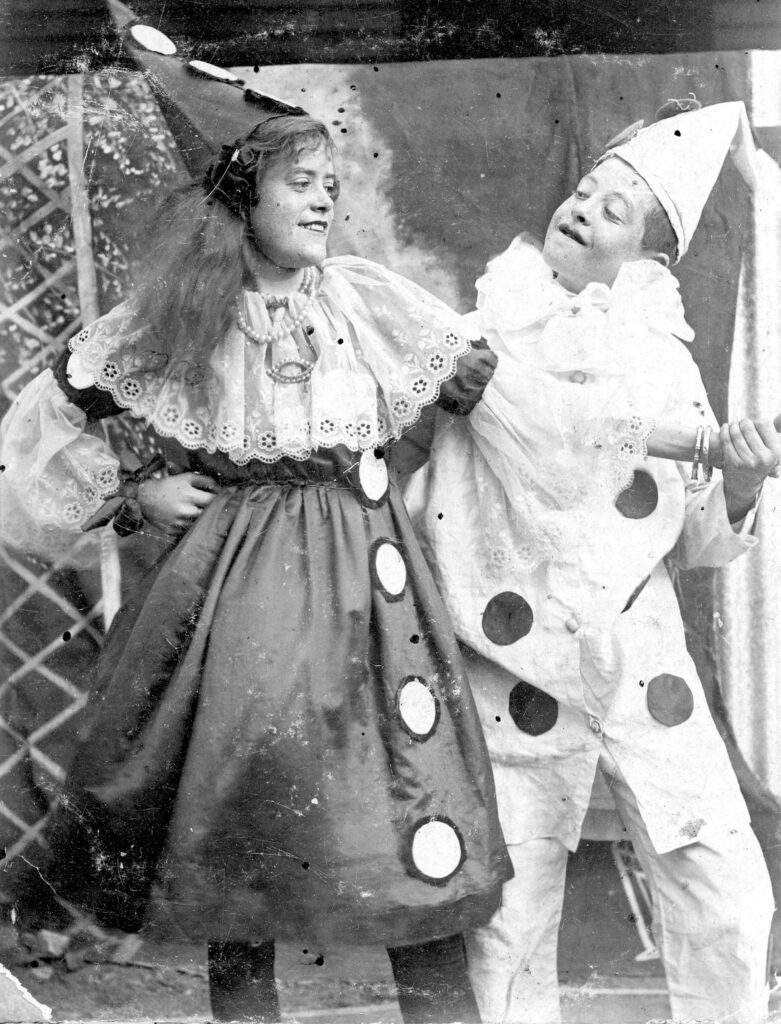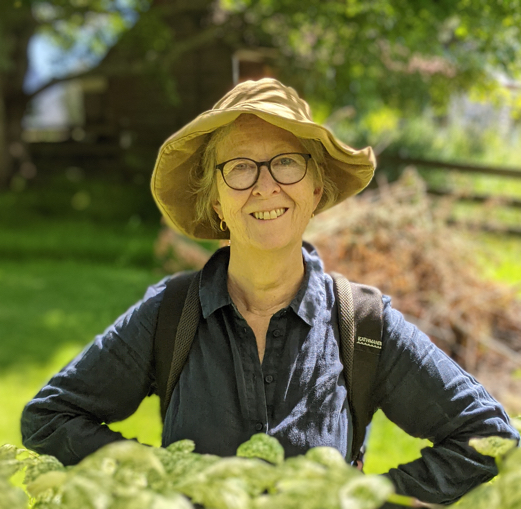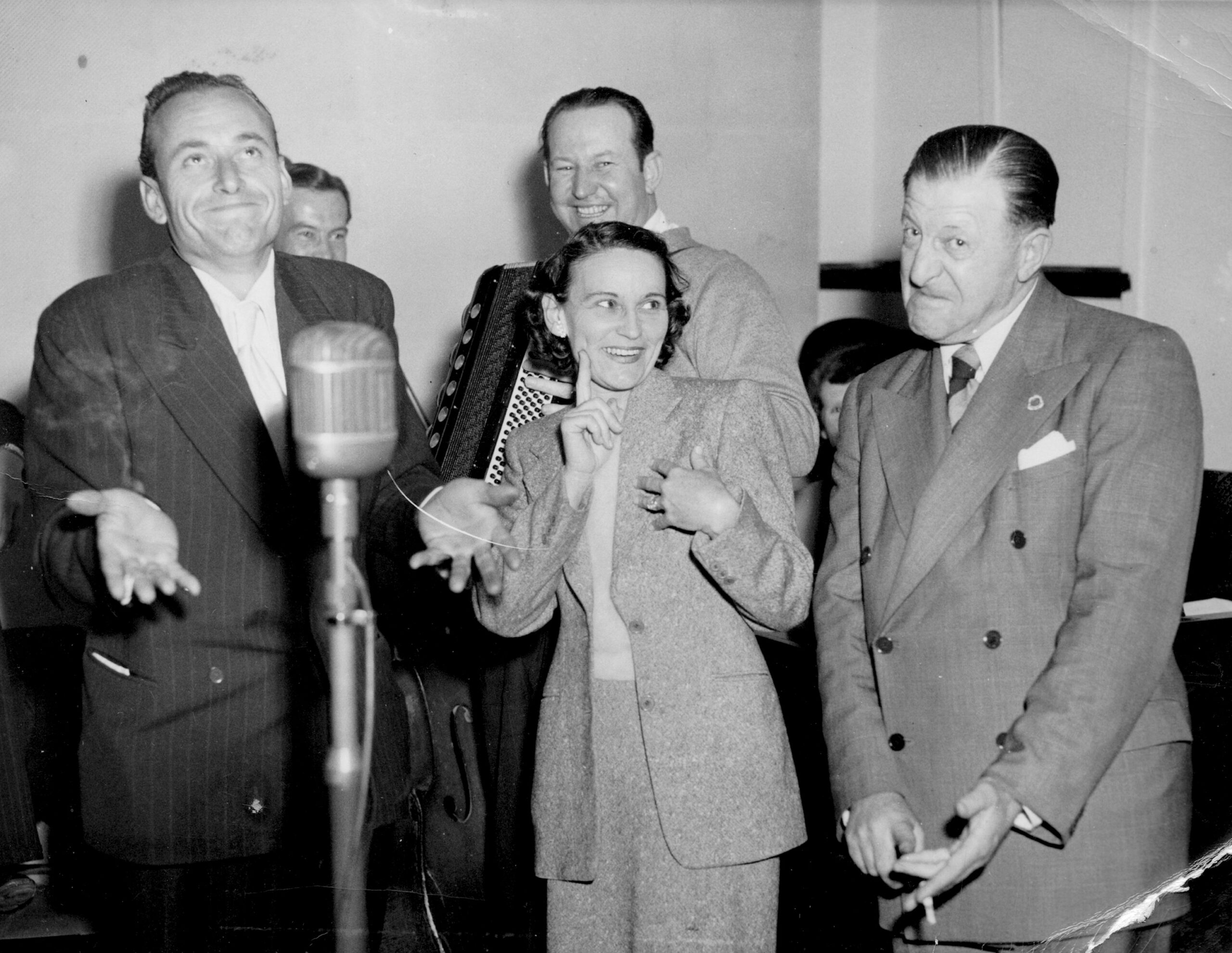Opening a mysterious case of old photographs, former documentary filmmaker Sharon Connolly begins a search for the great aunt she never knew.
Gladys Shaw was a whistling comedian, a singer and saxophonist, an eccentric dancer and a whip-cracker — one of the ‘girls’ who made Australia laugh in a man’s world. Sharon’s new book is called My Giddy Aunt and her sister comedians. BroadAgenda editor, Ginger Gorman, had a chat with her.
If you were sitting next to someone at a dinner party and you were explaining your book in a nutshell, what would you say?
It tells stories of whistlers, whipcrackers, comediennes and eccentric dancers, surprising women entertainers in Australia in the late 19th and early 20th centuries. They had unusual talents and they lived in an era of enormous change, for women and for performing artists everywhere, who were challenged by new entertainment technologies like cinema and radio.
A lot of us have quirky family backstories. What made you sure this was a story the public needed to hear?
I’d encourage other people with family backstories to make those public too! Our history needs more stories about the lives of women in earlier times, women often overlooked by history books and national mythologies.
I’d especially encourage those who have stories about the lives of people who were neither well educated nor well off, because they’re under-represented in our nation’s histories too. I’m confident about the public appetite for stories like those of my own family. My years in documentary production for film and television taught me that well made and accessible Australian history stories win audiences.
Tell us about the moment you made a discovery about your aunt, and you wanted to know more.
My musician brother (the late Steve Connolly), and I opened a mysterious case of family photos together.
When we saw the 1920s photographs of Keith Connolly’s Syncopating Jesters, an early Australian jazz band, our jaws hit the floor. Steve was impressed by their anarchic quality and the obvious exuberance of the musicians they showed; “I want what they’re having” he said.
But I was struck by the fact that in many of those shots there was only one woman, and to me she looked like she was stealing the show!
“She was born almost on the stage,” she wrote. “I will bring her up to it as she shows signs of being remarkably intelligent.” And so I wanted to know more about why that seemed to her a good career choice for a daughter born in 1895.
Who was Gladys Shaw? What made her so unusual?
The baby born “almost on the stage” became known as Gladys Shaw. By the age of five she was performing in theatrical companies managed by her father. Her stage career would go on to span 50 years, decades in which she earned her own living in a demanding and sometimes unkind profession. But I think she also had a lot of fun.
At the height of her career in the early 1920s, she was the principal character comedienne with the famous Stiffy and Mo revue company, and in press interviews she said “My idea of life, particularly stage life, is lights and laughter.”
She was extraordinarily adaptable and multi-skilled. So she was well known not only as a comic actress, but also as a whistler, a stand up comedienne, a dancer, saxophonist, banjo player and even as a whip cracker and sharp shooter! Though it sounds unusual, there were other women not unlike Gladys.
Women were surprisingly well represented on Australia’s vaudeville stages, and though they often played female stereotypes — servant girls and society matrons, ingenues and maiden aunts — they were themselves far from “ladylike”. Like Gladys they were independent women in an era of changing ideas about how they should behave.

Little Miss Gladys Shaw and Master Keith (the author’s great aunt and grandfather) appearing with _The English Pierrots_, ca. 1909.
What did you discover while writing this book that surprised you?
I think I was perhaps most surprised by the prevalence and popularity of male impersonators on our popular stages. When I grew up in the 1960s and 1970s there were plenty of Priscillas, but I never saw anyone like Effie Fellowes, or Nellie Kolle, or Nellie Small. I didn’t know such women existed.
Effie Fellowes also appeared as Bobby Folson and Freddie Manners. She dressed as a man onstage and sometimes off it. The Perth “Truth” accused women like her of predatory and sybaritic behaviour, but Effie seemed not to mind. She went to the US where she appeared alongside Al Jolson, Sophie Tucker and Stan Laurel. After her return to Australia she continued to perform for many years.
Apparently in late life she could be found performing her signature tune “I’ve never seen a straight banana,” in aged care homes around Perth.
Why is this a feminist tale?
It’s a feminist tale because it focusses on women in our theatrical history rather than the men! But also because I’ve told the women’s stories against a backdrop of social and political changes that affected women in general.
So while wars and depressions are part of the story because of their effects on women, so are the achievements of women’s suffrage, divorce law reform, and changes to child custody laws. Gladys Shaw and her mother both registered to vote as soon as they were entitled to have a say.
My great grandmother had neither the means nor the right to take her two small sons with her when she left her husband. Gladys had to prove her husband’s infidelity before she could escape an unhappy marriage. But they asserted their independence despite the restrictions of law and social expectations that would have had them live private, domestic lives, rather than dancing and whistling and carrying-on in public.
There is of course a darker side to the story, about the mental illnesses suffered by a number of women in the book. One was consigned to an asylum during her menopause, and stayed there for the remaining 43 years of her life. Another had a lobotomy, a crude treatment that seems to have been inflicted on women more frequently than men.

Author of ‘My Giddy Aunt”, Sharon Connolly.
Why have you spent so much of your career telling the stories of uncelebrated women?
I guess I’ve always wanted to know about the women who went before, and their stories are so often untold. When I made my first film, Red Matildas, in the 1980s, women were forming peace camps at Pine Gap.
The media seemed to suggest that this was the first peace activism in which women had been involved. Clearly that’s not the case, so I made a film about some of the women who were anti-war and anti-fascist activists between the world wars. They were inspiring!
As are the women in My Giddy Aunt, who were prepared to thumb their noses at convention so they could live as they chose. I hope the experiences of my “giddy aunt” and the many overlooked women of her entertaining sisterhood, contribute to a richer understanding of the “fabric” of our society and its culture, which is made of more threads than those spun by the well educated, the moneyed and the men about whom most history books are written.
My Giddy Aunt and her sister comedians is out now.
- Feature image: Elsie Hosking (aka Sunny Day, the author’s grandmother) with husband Keith Connolly(r) and colleagues at the ABC, Perth, ca. 1949. Picture: Supplied
Ginger Gorman is a fearless and multi award-winning social justice journalist and feminist. Ginger’s bestselling book, Troll Hunting,came out in 2019. Since then, she’s been in demand both nationally and globally as an expert on cyberhate and the real-life harm predator trolling can do. She's also the editor of BroadAgenda and gender editor at HerCanberra. Ginger hosts the popular "Seriously Social" podcast for the Academy of the Social Sciences in Australia. Follow her on Twitter.





